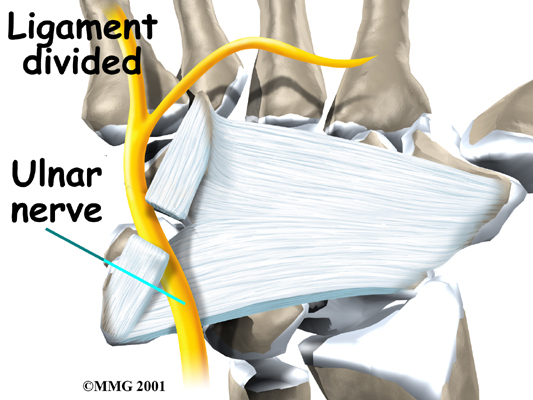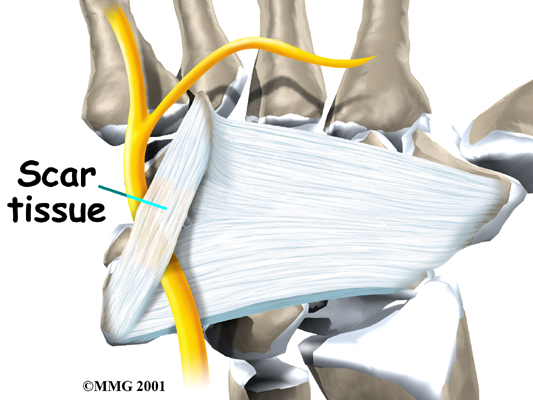Non-surgical Rehabilitation
When you begin your physiotherapy program, our physiotherapist will recommend that you change or stop the activities that might be causing your symptoms if at all possible. Avoid repetitive hand motions, heavy grasping, resting your palm against hard surfaces, and positioning or working with your wrist bent down and out.
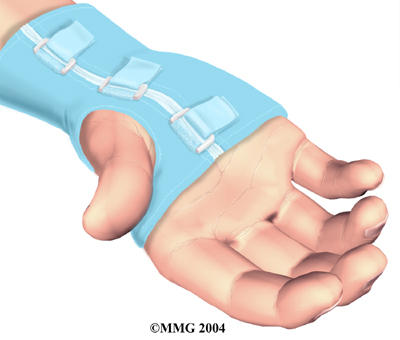 We may have you wear a in the early stages of Guyon's canal syndrome. A brace keeps the wrist in a resting position (neither bent back nor bent down too far). It can be especially helpful for easing the numbness and pain felt at night because it can keep your hand from curling under as you sleep. The wrist brace can also be worn during the day to calm symptoms and rest the tissues within the canal.
We may have you wear a in the early stages of Guyon's canal syndrome. A brace keeps the wrist in a resting position (neither bent back nor bent down too far). It can be especially helpful for easing the numbness and pain felt at night because it can keep your hand from curling under as you sleep. The wrist brace can also be worn during the day to calm symptoms and rest the tissues within the canal.
We may also recommend anti-inflammatory medications. Common over-the-counter medications, such as ibuprofen and aspirin, can also help control the symptoms of Guyon's canal syndrome.
The main focus of your Momentum Spine & Sport Physiotherapy treatment is to reduce or eliminate the cause of pressure on the ulnar nerve. Our physiotherapist may check your workstation and the way you do your work tasks. We will provide suggestions about the use of healthy body alignment and wrist positions, helpful exercises, and tips on how to prevent future problems.
Although the rate of recovery is different for each patient, if nonsurgical treatment is successful, you may see improvement in four to six weeks. We may recommend that you continue wearing your wrist splint at night to control symptoms and keep your wrist from curling under as you sleep. Try to do your activities using healthy body and wrist alignment. Limit activities that require repeated motions, heavy grasping, and pressure on the palm of the hand.
Post-surgical Rehabilitation
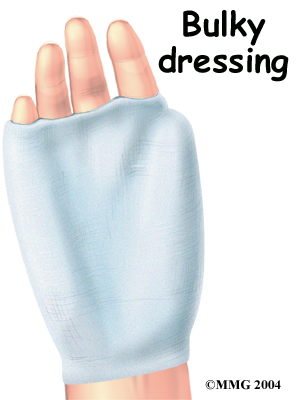 Your hand will be wrapped in a following surgery. When you begin your recovery, our physiotherapist will advise you to take time during the day to support your arm with your hand elevated above the level of your heart. We will encourage you to move your fingers and thumb occasionally during the day. Keep the dressing on your hand until you return to the surgeon. Avoid getting the stitches wet. Your stitches will probably be removed 10 to 14 days after surgery.
Your hand will be wrapped in a following surgery. When you begin your recovery, our physiotherapist will advise you to take time during the day to support your arm with your hand elevated above the level of your heart. We will encourage you to move your fingers and thumb occasionally during the day. Keep the dressing on your hand until you return to the surgeon. Avoid getting the stitches wet. Your stitches will probably be removed 10 to 14 days after surgery.
Pain and numbness generally begin to improve after surgery, but you may have tenderness in the area of the incision for several months.
Although each patient recovers at a different rate, you will probably need to attend our occupational or physiotherapy sessions for six to eight weeks, and you should expect full recovery to take several months. We will start by having you begin doing active hand movements and range-of-motion exercises. Our physiotherapistss also use ice packs, soft-tissue massage, and hands-on stretching to help with your range of motion. When your stitches are removed, we may suggest that you start carefully strengthening your hand by squeezing and stretching special putty.
As you progress, our physiotherapist will give you exercises to help strengthen and stabilize the muscles and joints in the hand. We use other exercises to improve fine motor control and dexterity. Some of the exercises you'll do are designed get your hand working in ways that are similar to your work tasks and sport activities.
Our physiotherapist will help you find ways to do your tasks that don't put too much stress on your hand and wrist. Before your physiotherapy sessions end, your physiotherapist will teach you a number of ways to avoid future problems.
When your recovery is well under way, regular visits to Momentum Spine & Sport Physiotherapy will end. Although we will continue to be a resource, you will eventually be in charge of doing your exercises as part of an ongoing home program.
Momentum Spine & Sport Physiotherapy provides services for physiotherapy in Edmonton and St Albert.
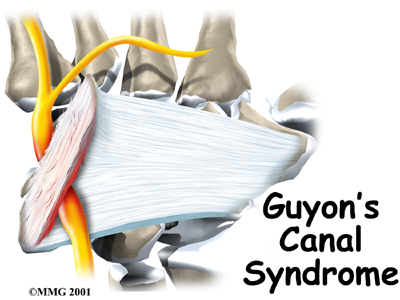

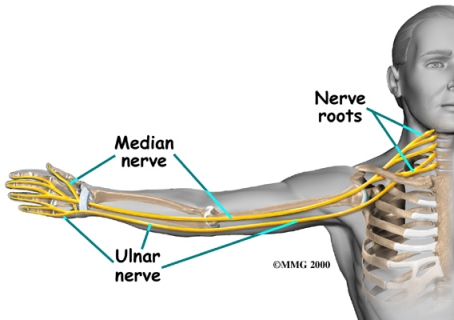
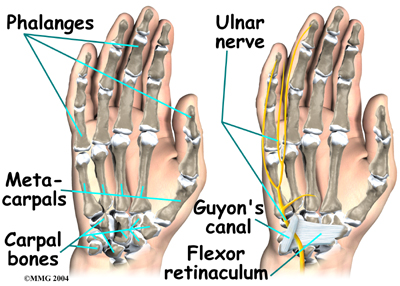
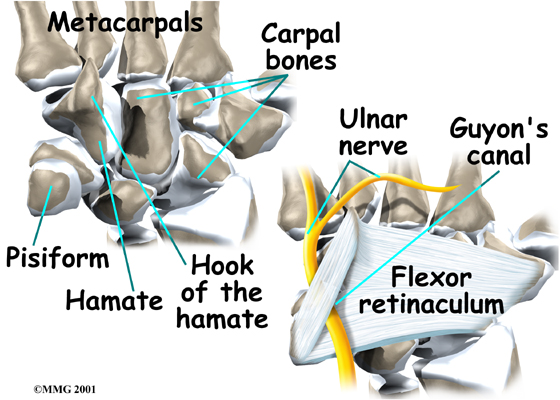
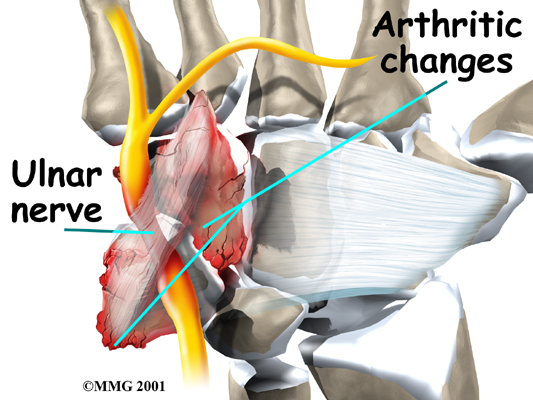 Guyon's canal syndrome has several causes. Overuse of the wrist from heavy gripping, twisting, and repeated wrist and hand motions can cause symptoms. Working with the hand bent down and outward can squeeze the nerve inside Guyon's canal.
Guyon's canal syndrome has several causes. Overuse of the wrist from heavy gripping, twisting, and repeated wrist and hand motions can cause symptoms. Working with the hand bent down and outward can squeeze the nerve inside Guyon's canal.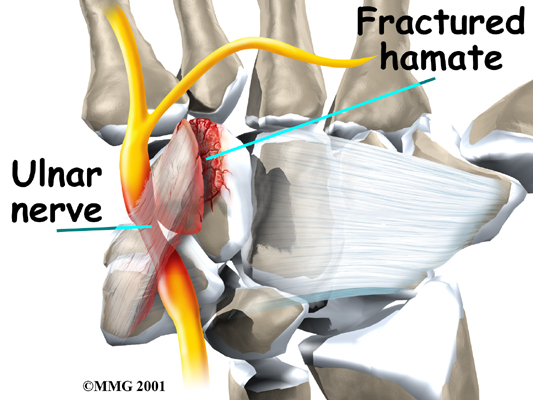
 We may have you wear a
We may have you wear a  Your hand will be wrapped in a
Your hand will be wrapped in a 
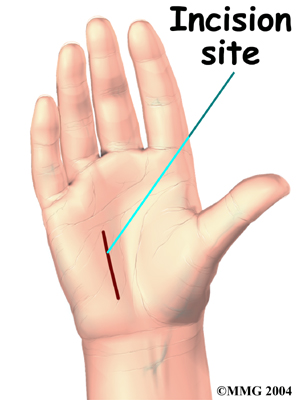 The surgery can be done using a general anesthetic (one that puts you to sleep) or a regional anesthetic.
The surgery can be done using a general anesthetic (one that puts you to sleep) or a regional anesthetic.